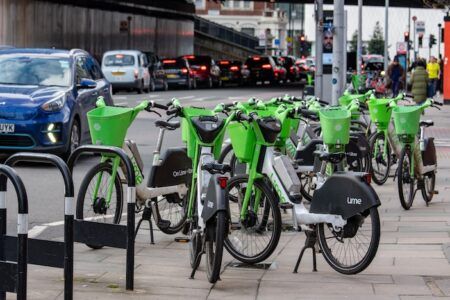One of the leaders in connected car services and transportation analytics, Inrix, has released the findings of the first ever ‘Cost of Driving’ study that calculated vehicle ownership costs in 30 major cities in the USA, UK and Germany, with parking being the largest ‘hidden’ factor.
The new Inrix study found that the indirect or ‘hidden’ costs of driving, such as sitting in traffic and searching for parking, carry a significant economic burden for drivers in the USA, to the tune of US$3,037 per driver in 2017.
The average US driver faced a total annual driving cost of US$10,288 in 2017, made up of direct outlay and maintenance, fuel, insurance and parking and toll fees, as well as indirect/hidden fees such as wasted time spent in traffic, parking fines and overpayments. Interestingly, traffic- and parking-related costs made up nearly half (45%) of the total cost of ownership in the USA.
On a national level, the average annual cost faced by US drivers in 2017 was 55% more than the average UK driver and 14% more than the average German driver. However, drivers in the USA use their cars more than their German counterparts, with 13,467 miles (21,673km) driven annually in the USA compared to 8,709 miles (14,015km) driven annually in Germany, but the congestion impact is smaller.
At a local level in the USA, New York City was the most expensive city for drivers out of the 30 cities studied. In 2017, the total cost of driving in NYC was nearly two times the national average at US$18,926 per driver, mostly due to the cost of parking. New Yorkers parked more often (10 times/week), paid more frequently (60%), and paid the most (average off-street rate of US$28 for two hours). At US$10,203 per driver, Detroit had the lowest total cost of car ownership, mostly due to cheaper on-street and off-street parking rates.
However, Inrix notes that there are solutions to alleviate some of these costs through awareness and technology. The company says that applying big data to create intelligent connected car services is key to solving mobility problems, which will reduce the economic impact of congestion and parking pain.
Inrix highlights that it currently makes use of vehicle connectivity, advanced parking management, dynamic data for city planning and traffic flow optimization to help make it safer, cleaner more convenient and more enjoyable for people to travel in their cars.
“The true cost of driving was staggering, but what was truly surprising was the size and breakdown of the hidden costs. Parking, for example, made up a third of the total cost of vehicle ownership,” explained Dr Graham Cookson, chief economist at Inrix. “On average, drivers spent more than US$3,000 a year on all parking-related costs.”




